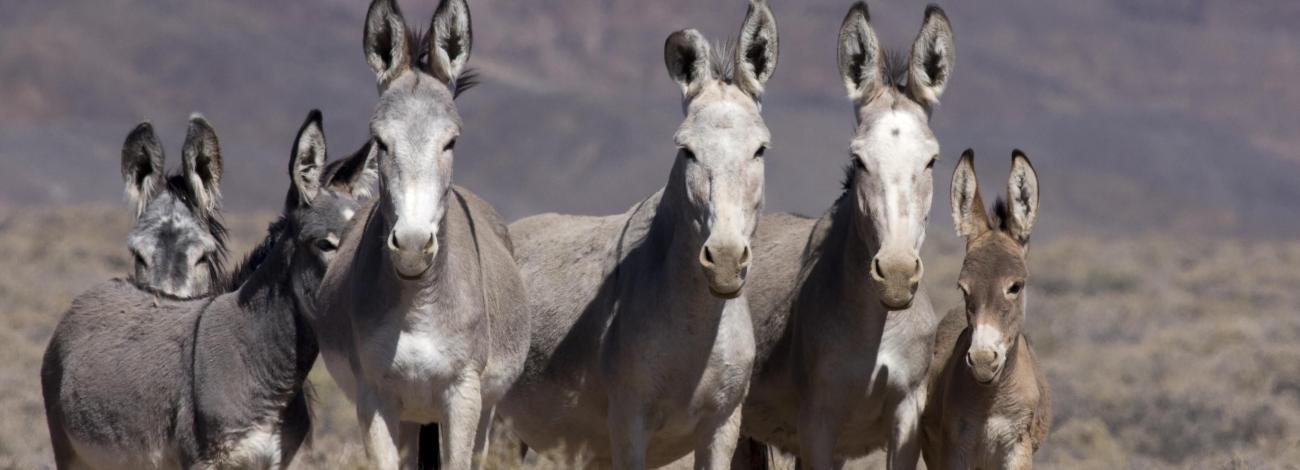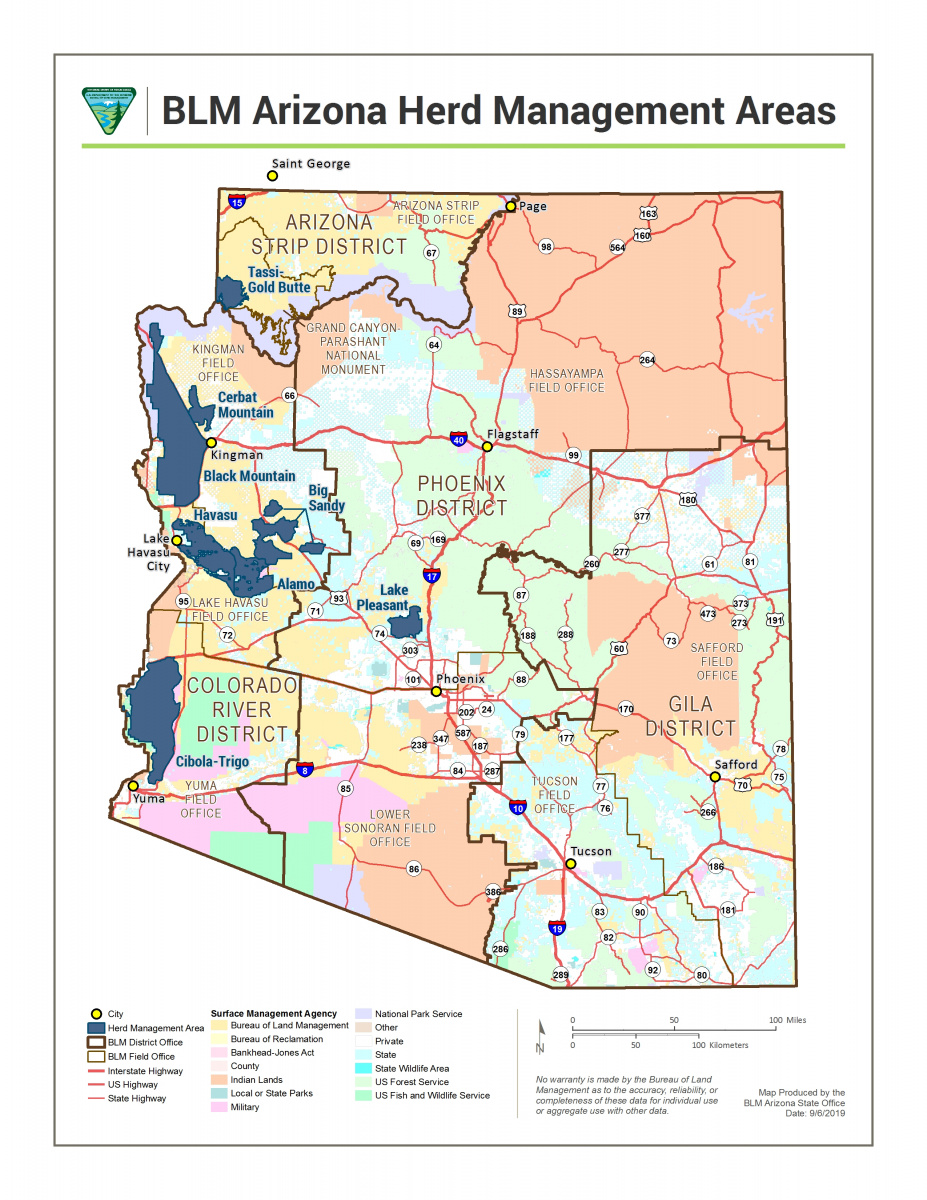
Big Sandy Herd Management Area (HMA)
Wild burros living in the Big Sandy HMA today are typically gray, though some may be brown, pink, or black. These animals weigh between 450 and 500 pounds and average 44 inches in height at the shoulder when fully grown. The burros generally inhabit the lower areas of the region, preferring river bottom areas. The current population is estimated to be about 1,000.
Location: The Big Sandy Herd Management Area (HMA) is in west central Arizona, 55 miles southeast of Kingman on either side of U.S. Highway 93. The HMA includes the areas of the Big Sandy River Valley south of Wikieup to Alamo Lake, Burro Creek to the confluence of Boulder Creek and west through the southern foothills of the Hualapai Mountains.
Size: The Big Sandy HMA encompasses almost 244,000 acres.
Topography/Vegetation: Vegetation includes plants typical to Arizona’s interior chaparral, grasslands and lower Sonoran Desert shrub communities. The waters of the Big Sandy River flow lazily into a valley between the Hualapai Mountains on the west and the Aquarius Mountains on the east. The HMA is known for its narrow riverbeds resting in broad valley troughs, deep gorges and sheer cliffs. The uplands are made up of sloping alluvial fans, dissected by sandy washes. The climate is generally warm, windy and dry with highs exceeding 120 degrees and lows approaching a freezing 30 degrees. The area rainfall averages between 7 and 14 inches annually, falling as intense thunderstorms in late summer and gentle wind-spread rain in the winter months.
Wildlife: Wild burros share this habitat with desert bighorn sheep, desert mule deer, quail, hares, and a variety of small desert mammals.
AML: 111-139

